BPM-CUL3 E3 ligase modulates thermotolerance by facilitating negative regulatory domain-mediated degradation of DREB2A in Arabidopsis
- PMID: 28923951
- PMCID: PMC5635875
- DOI: 10.1073/pnas.1704189114
BPM-CUL3 E3 ligase modulates thermotolerance by facilitating negative regulatory domain-mediated degradation of DREB2A in Arabidopsis
Abstract
DEHYDRATION-RESPONSIVE ELEMENT BINDING PROTEIN 2A (DREB2A) acts as a key transcription factor in both drought and heat stress tolerance in Arabidopsis and induces the expression of many drought- and heat stress-inducible genes. Although DREB2A expression itself is induced by stress, the posttranslational regulation of DREB2A, including protein stabilization, is required for its transcriptional activity. The deletion of a 30-aa central region of DREB2A known as the negative regulatory domain (NRD) transforms DREB2A into a stable and constitutively active form referred to as DREB2A CA. However, the molecular basis of this stabilization and activation has remained unknown for a decade. Here we identified BTB/POZ AND MATH DOMAIN proteins (BPMs), substrate adaptors of the Cullin3 (CUL3)-based E3 ligase, as DREB2A-interacting proteins. We observed that DREB2A and BPMs interact in the nuclei, and that the NRD of DREB2A is sufficient for its interaction with BPMs. BPM-knockdown plants exhibited increased DREB2A accumulation and induction of DREB2A target genes under heat and drought stress conditions. Genetic analysis indicated that the depletion of BPM expression conferred enhanced thermotolerance via DREB2A stabilization. Thus, the BPM-CUL3 E3 ligase is likely the long-sought factor responsible for NRD-dependent DREB2A degradation. Through the negative regulation of DREB2A stability, BPMs modulate the heat stress response and prevent an adverse effect of excess DREB2A on plant growth. Furthermore, we found the BPM recognition motif in various transcription factors, implying a general contribution of BPM-mediated proteolysis to divergent cellular responses via an accelerated turnover of transcription factors.
Keywords: DREB2A-interacting proteins; E3 ubiquitin ligase; abiotic stress response; co-IP coupled with LC-MS/MS; posttranslational regulation.
Conflict of interest statement
The authors declare no conflict of interest.
Figures
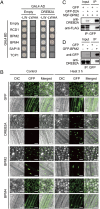


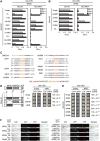

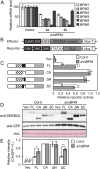

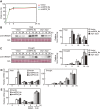
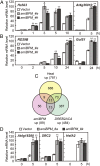
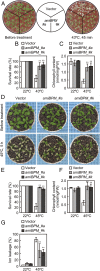

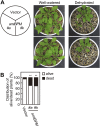
References
-
- Yamaguchi-Shinozaki K, Shinozaki K. Transcriptional regulatory networks in cellular responses and tolerance to dehydration and cold stresses. Annu Rev Plant Biol. 2006;57:781–803. - PubMed
-
- Ohama N, Sato H, Shinozaki K, Yamaguchi-Shinozaki K. Transcriptional regulatory network of plant heat stress response. Trends Plant Sci. 2017;22:53–65. - PubMed
-
- Covarrubias AA, Reyes JL. Post-transcriptional gene regulation of salinity and drought responses by plant microRNAs. Plant Cell Environ. 2010;33:481–489. - PubMed
-
- Miura K, Hasegawa PM. Sumoylation and other ubiquitin-like post-translational modifications in plants. Trends Cell Biol. 2010;20:223–232. - PubMed
-
- Lyzenga WJ, Stone SL. Abiotic stress tolerance mediated by protein ubiquitination. J Exp Bot. 2012;63:599–616. - PubMed
Publication types
MeSH terms
Substances
LinkOut - more resources
Full Text Sources
Other Literature Sources
Molecular Biology Databases

